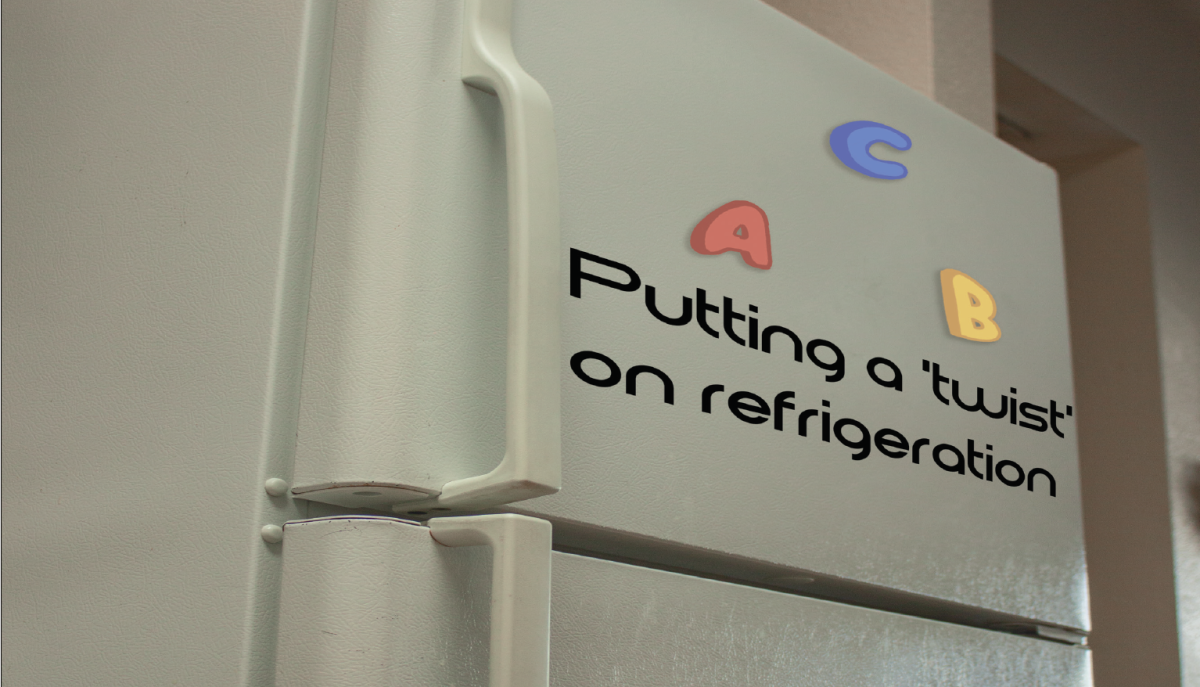
By twisting and untwisting wires, resesarchers can create cooling effects more efficiently than traditional compression methods. Graphic by Chiamaka Mgboji | Graphics Editor
Researchers from UTD’s NanoTech Institute and Nankai
University in China discovered a way to increase the efficiency of traditional
refrigeration methods through the use of rubber fibers.
Chemistry professor
Ray Baughman, the director of the NanoTech institute, and Zunfeng Liu of Nankai
University were corresponding authors for the paper, which was published in the
Oct. 11 issue of Science. The scientists discovered that rather than compressing
gas, as traditional refrigerators do, a more efficient method could be to twist
rubber fibers. Untwisting the wires produced a more effective cooling method
and didn’t release greenhouse gases like traditional refrigerators.
Baughman said that while
this discovery could potentially combat the efficiency issues found with
traditional refrigeration, which has an efficiency of less than 60%, it hasn’t
been tested in a fully functional fridge.
“Our goal was to get
higher efficiency than conventional compressional refrigeration,” Baughman
said. “We wanted a cheap, smaller refrigerator, and a smaller volume
refrigerator, which this tech allows.”
This project was
based off the knowledge gained from a previous study conducted by Baughman and
his associates. For over 15 years, Baughman and the Nanotech Institute have
been researching the concepts that eventually allowed for this technology to be
developed.
“About a year ago, we
had a paper in which we took several kinds of fibers like nanotube yarns and regular
fishing line,” Baughman said. “We were able to make a mechanical artificial
muscle just using those materials. Each discovery is based on the one before
that.”
Most air
conditioners, heat pumps and refrigerators use vapor compression of refrigerants
to provide their temperature altering effects. Air conditioning and
refrigerators take up around 20% of the world’s electrical energy according to
the International Institute of Refrigeration. Refrigerators also release gases
that can pollute the atmosphere and contribute to climate change. Other types
of alternative refrigeration techniques such as thermoelectric cooling and
hydrostatic pressure haven’t been used on a large scale.
The technology used
in this particular study is simple, Baughman said. If you take rubber and
stretch it, that decreases entropy, or disorder. Releasing that stretch results
in the conversion from low entropy to high entropy. The universe prefers more
disorder, or higher entropy, so the release results in cooling.
“The problem with
this is you have to stretch the rubber almost 600% to get cooling. We use
twist,” Baughman said. “We maintain only a little stretch, we just have to
release twist and you get cooling.”
Baughman said that by
using coiled or even supercoiled fibers, one can provide the same amount of
cooling as a stretched fiber at at approximately 30% the amount of stretch.
Releasing the twist and stretch from a supercoiled rubber fiber produces
cooling of about 16 degrees Celsius.
“Efficiency is key,”
Baughman said. “With stretch you only get half efficiency. The efficiency of
our method is at 67%.”
The researchers
testing the cooling ability of other materials as well. One of them was nickel
titanium wires. These wires were able to reduce the temperature of running
water by almost 8 degrees Celsius.
“Think of a metal
spring. When you stretch it, it’ll get longer but not because its length is
changing,” Baughman said. “It’s because the twist in the coiling is being
converted to the twist in the wire.”
Baughman said that
there has been industry interest in technology. This material performs better
than competing ideas in circulation. The concept of twist-based cooling could
also potentially be used to make clothing that keeps the wearer cool.
“We know now that we
can take artificial electrochemical energy and harvest mechanical energy from
it,” Baughman said. “Who knows what else we can find out from this
discovery?”